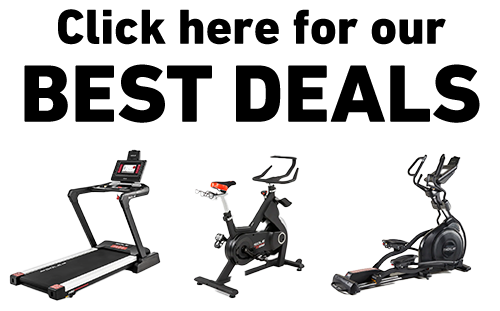Key Takeaways
- The barbell bent over row primarily targets the latissimus dorsi while engaging rhomboids, traps, rear deltoids, biceps, and core for comprehensive back development.
- This compound movement improves posture, reduces back pain, and enhances performance in other lifts.
- Proper form with neutral spine and correct hip hinge prevents injury while maximizing muscle activation.
- Effective alternatives include T-bar rows, cable rows, and chest-supported variations for those with lower back issues.
- SOLE's Olympic barbell and adjustable dumbbells provide the perfect tools for bent over rows and their variations.
Why Barbell Bent Over Rows Are Your Secret Weapon for Back Growth
What makes the barbell bent over row so effective? Unlike isolation exercises that target single muscles, this compound movement uses multiple muscle groups simultaneously. It's this synergistic effect that makes it superior for building impressive back thickness and width.
The bent over row also allows you to handle heavier loads than many other back exercises, creating the mechanical tension necessary for maximum muscle growth.
The row's unique body position—bent at the hips with a neutral spine—forces your entire posterior chain to work together under load. This not only builds muscle but also teaches your body to maintain proper positioning during other lifts.
And unlike machine alternatives, the barbell version requires significant core stability and coordination, turning it into a full-body developer rather than just a back exercise.
|
At SOLE, we're proud to offer top-quality exercise equipment designed for home and gym use. Our machines are built to meet the highest standards of durability and performance, making them ideal for fitness enthusiasts at any level. SOLE Products
|
Primary Muscles Worked
The barbell bent activates muscles throughout your upper and mid-back, as well as your arms and core. (Image courtesy of Premier Sportsplex)
Latissimus Dorsi
The lats are the primary movers, responsible for the pulling action that brings the barbell toward your torso. Well-developed lats create the coveted V-taper physique. During the pulling phase, your lats contract forcefully to adduct the shoulder joint and bring elbows toward your body, making this one of the most effective lat exercises.
Rhomboids & Middle Trapezius
Your rhomboids and middle traps activate when you squeeze your shoulder blades together during rows. This builds upper back thickness and improves posture, directly countering the forward head position from desk work.
Rear Deltoids
Your rear delts activate as secondary muscles when pulling elbows up and back, especially with wider grips. Strong rear delts create balanced shoulders and help prevent forward-hunched posture from overdeveloped front deltoids.
Biceps & Forearm Flexors
While not primary targets, biceps bend your elbows during the pull while forearm flexors maintain grip. This explains the bicep pump after heavy rowing sessions. The grip challenge also develops forearm strength that carries over to deadlifts and pull-ups.
Core Engagement
Your entire midsection works isometrically to maintain bent-over position throughout the set. This core stabilization prevents lower back rounding and protects your spine, making the barbell row a petty solid core developer.
Performance Benefits Beyond Muscle Building
When integrated properly into a balanced training program, barbell bent over rows become an important exercise that improves multiple aspects of physical performance. (Image courtesy of WeRstupid)
Improved Posture & Reduced Back Pain
Regular barbell rowing counteracts "computer posture" by strengthening muscles that pull shoulders into proper alignment. The isometric back extension strengthens spinal erectors, with many lifters reporting decreased back pain after incorporating properly performed rows.
Carryover to Other Lifts
The bent over row has remarkable carryover to deadlifts due to similar hip hinge patterns and back positions. Even bench press benefits from improved scapular control and upper back stability, creating a more solid pressing platform.
Enhanced Athletic Performance
Athletes benefit from the power and coordination developed through barbell rows. The rowing motion mimics many athletic movements involving pulling or controlling opponents, particularly beneficial for wrestlers, rugby players, and martial artists.
Grip Strength Development
Progressive overload with heavier weights naturally improves grip strength, which carries over to other exercises and daily activities. Research shows that higher grip strength predicts overall health and longevity.
How to Perfect Your Barbell Bent Over Row Form
1. Proper Starting Position
- Stand with feet hip-width apart
- Hinge at hips, pushing butt back while maintaining neutral spine
- Knees slightly bent
- Core braced throughout movement
2. Grip Width & Hand Position
- Standard grip: Slightly wider than shoulder-width
- Narrow grip: Emphasizes lats and biceps
- Wide grip: Targets upper back and rear delts
- Overhand grip is the standard while underhand grip increases bicep involvement
3. The Pulling Movement
- Pull bar to lower chest/upper abdomen
- Drive elbows back and up
- Squeeze shoulder blades together at top
- Control the descent and don't let gravity take over
4. Back Angle and Hip Hinge
- Torso between 15–45 degrees from horizontal
- Lower angles increase difficulty and lat activation
- Higher angles reduce lower back stress but decrease range of motion
5. Common Form Mistakes
- Excessive torso movement: Keep your body rigid throughout the entire movement to maintain proper form and maximize muscle activation.
- Pulling to neck: This reduces lat activation, so always pull the bar to your torso instead.
- Rounded back: Maintain a neutral spine position throughout the exercise to prevent injury and ensure optimal muscle engagement.
- Excessive momentum: Control the weight throughout both phases of the movement rather than jerking it up with momentum.
Programming for Maximum Results
Sets and Reps
- For Strength: 3–5 sets of 3–6 reps at 80–90% 1RM
- For Hypertrophy: 3–4 sets of 8–12 reps at 65–80% 1RM
- For Endurance: 2–3 sets of 15+ reps at 50–65% 1RM
Weight Selection
Start with an empty barbell to perfect form. Add weight only when you can complete all reps with perfect technique. Increase loads by 5–10 pounds when you can complete all sets with 2 reps in reserve.
Training Frequency
- Beginners: 1x per week in full-body workout
- Intermediate: 2x per week in upper/lower or push/pull split
- Advanced: 2–3x per week with varied intensities
Best Alternatives to Barbell Rows
Sometimes you need a break from barbell rows or want to mix things up. (Image courtesy of Dmoose)
T-Bar Rows: Easier on Your Back
T-bar rows give you a similar movement with more stability. The fixed bar path and chest support reduce lower back stress. You can often go heavier than barbell rows since balance isn't an issue. Most gyms have a T-bar row station, or you can set one up with a barbell in a corner.
Cable Rows: Constant Tension
Cables keep tension on your muscles the entire rep. No rest at the bottom or top means more time under tension. The seated position takes your lower back out of the equation. Perfect for really feeling your back muscles work and getting a good pump.
Dumbbell Rows: Fix Imbalances
Working one arm at a time shows you which side is weaker. The three-point stance (hand and knee on bench) gives great stability. In dumbbell rows, you can rotate slightly at the top for a stronger contraction. Start with your weak side and match the reps on your strong side.
Inverted Rows: Use Your Bodyweight
No weights? No problem. Hang from a bar or suspension trainer and row your body up. Make it harder by getting more horizontal or easier by standing more upright. Zero spine compression makes these great for anyone with back issues.
Chest-Supported Rows: Pure Back Work
Lay face down on an incline bench and row. Your chest support means zero lower back involvement. You can focus 100% on pulling with your back muscles. Use these when your lower back is tired from deadlifts or squats.
Building Your Back Workout
Sample Beginner Routine (2x weekly)
- Lat Pulldowns: 3×10–12
- Supported Dumbbell Rows: 3×10 per arm
- Barbell Bent Over Rows: 3×8–10
- Supermans: 2×15
Intermediate Split (2x weekly)
Heavy Day:
- Deadlifts: 3×5
- Weighted Pull-ups: 4×6–8
- Barbell Bent Over Rows: 4×6–8
- Chest-Supported Rows: 3×10–12
- Single-Arm Cable Rows: 3×12–15 per arm
Moderate Day: Same exercises with lighter weight and higher reps (10–15 range).
Advanced Specialization (3x weekly)
- Day 1 (Power): Heavy deadlifts, Pendlay rows, weighted pull-ups
- Day 2 (Volume): Higher rep barbell rows, cable work, isolation exercises
- Day 3 (Detail): Unilateral work, chest-supported variations, rear delt focus
Build a Powerful Back with SOLE's Professional-Grade Equipment
SOLE's strength equipment transforms your home into a back-building gym.
The barbell bent over row might be your secret weapon for back growth, but having the right equipment makes all the difference between good results and great ones. SOLE delivers the tools you need to maximize this powerful exercise.
The SW111 Olympic Barbell is built for serious rowing. Its 194,000 PSI tensile strength means zero flex even when you're pulling heavy—crucial for maintaining proper bar path during bent over rows. The specialized knurling provides secure grip without tearing up your hands, letting you focus on squeezing those shoulder blades rather than worrying about the bar slipping.
For row variations and addressing muscle imbalances, the SW180 Adjustable Dumbbells are game-changers. With weights from 5–80 pounds, you can perform single-arm rows that reveal and correct strength differences between sides. The balanced weight distribution keeps the dumbbells stable throughout the movement, essential for maintaining proper form during heavy rowing sets.
The SW116 Weight Bench opens up chest-supported row variations—perfect for when your lower back needs a break or you want to isolate your upper back without stability demands. Its multiple angle adjustments let you target different areas of your back while protecting your spine.
The SOLE Equipment Mat provides the stable, non-slip foundation needed for bent over rows. Its cushioning also makes it perfect for the stretching and mobility work that keeps your back healthy between heavy rowing sessions.
The SOLE+ app includes comprehensive back workouts showing proper rowing form and programming strategies. You'll learn how to progress from beginner to advanced routines while avoiding the common mistakes that limit results or cause injury to your back.
Frequently Asked Questions (FAQ)
Are barbell rows better than deadlifts for back development?
They complement each other. Deadlifts target lower back and posterior chain; barbell rows focus on upper back muscles. Include both for complete development.
How often should I perform barbell rows?
Most benefit from 1–2 times weekly. Beginners once, intermediates twice, advanced lifters might add variations for 2–3 total rowing sessions. Allow 48–72 hours between heavy sessions.
Can I replace pull-ups with barbell rows?
No, they target different movement patterns. Pull-ups create lat width through vertical pulling; rows develop thickness through horizontal pulling. Both are necessary for complete development.
What's the difference between barbell and dumbbell rows?
Barbell rows allow heavier total loads and enforce balanced development. Dumbbell rows permit greater range of motion and help correct imbalances. Include both for optimal results.
What SOLE equipment setup is best for a complete back workout including bent over rows?
For a killer back setup, start with the SW111 Olympic Barbell for your heavy bent over rows. This is where you'll build that thick, powerful back with progressive overload.
Add the SW180 Adjustable Dumbbells for single-arm rows and addressing any left-right imbalances (super common but often ignored).
The SW116 Weight Bench is a clutch for chest-supported rows when your lower back is fried from deadlifts or you want to really isolate your upper back. This three-piece combo covers every rowing variation you'd find in a commercial gym.







Leave a comment
This site is protected by hCaptcha and the hCaptcha Privacy Policy and Terms of Service apply.